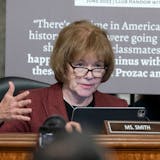Brownfields come in all shapes and sizes, from a few blocks to many acres, and all locations, from inner cities through suburbia and into rural areas.
They get their name because they have environmental contamination. And their owners, in some cases public officials, would like to overcome that obstacle to return them to some kind of productive use.
Sometimes, such as with the site of the former Ford Motor Co. assembly plant in St. Paul, the contamination is manageable enough to remove safely and allow for a new life as tax-generating, privately redeveloped properties.
At other sites, such as with the dozens of closed and "capped" landfills that dot the state, the environmental risks and physical limitations remain too high to let them be used for housing, shopping centers or industrial facilities.
But now an alternative to commercial redevelopment is emerging: conversion into solar power installations.
Brownfield advocates locally and around the country are touting the unique suitability of many former landfills to host solar panels, thereby wringing at least some value out of even the worst contamination sites.
"Using capped landfills for solar development is something that has the potential to provide a great amount of energy to the country," said Joe Mahowald, a program associate with Minnesota Brownfields, a nonprofit group devoted to promoting the redevelopment of contaminated lands. "There are thousands of landfills that meet the necessary criteria for solar development."
Those prerequisites, he said, include open land space, optimal solar exposure, access to service roads, compliance with zoning regulations and access to the electric grid.


